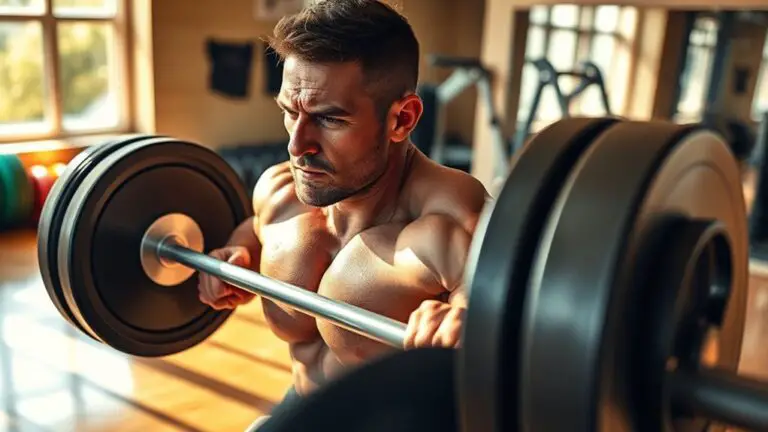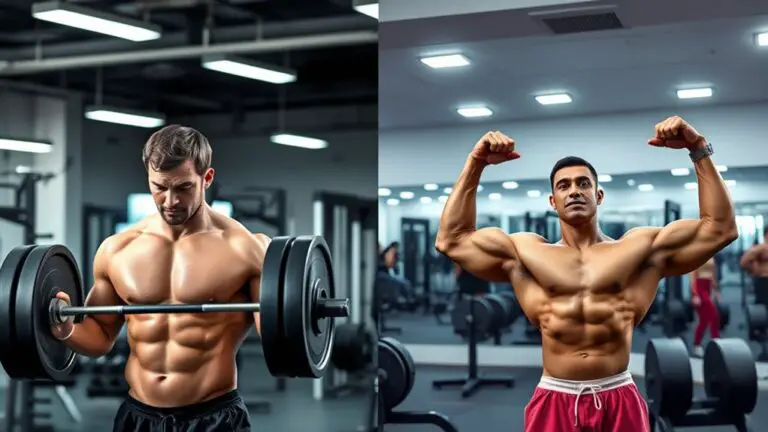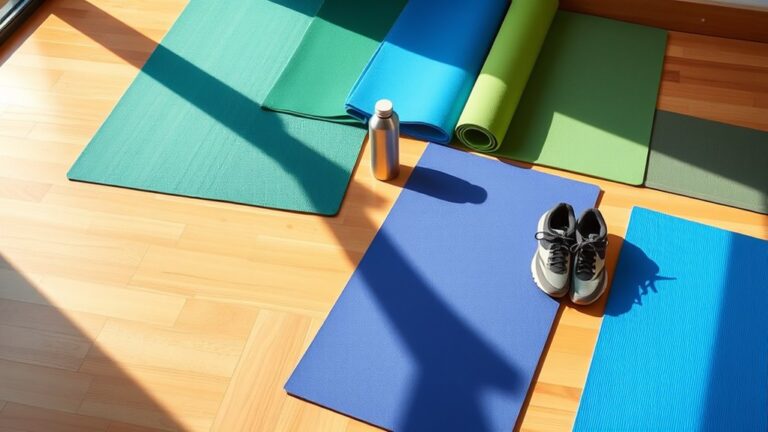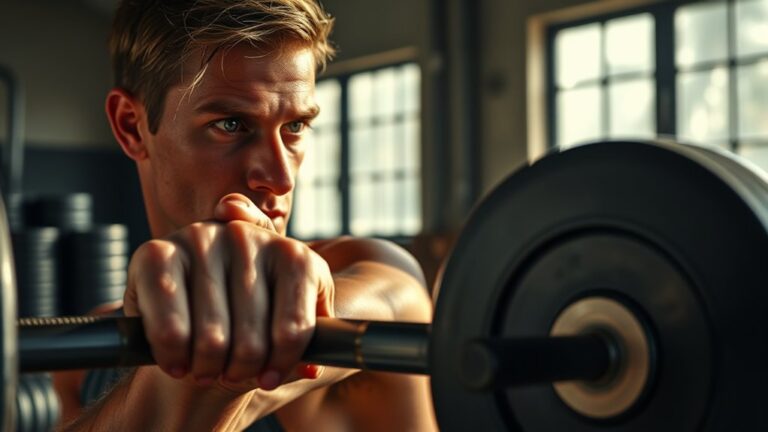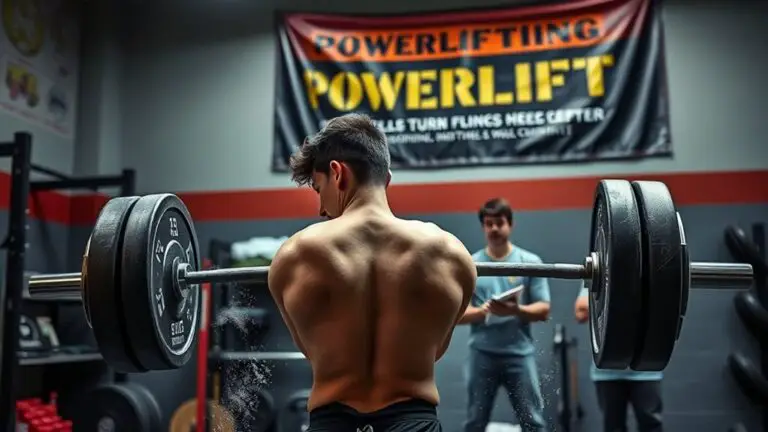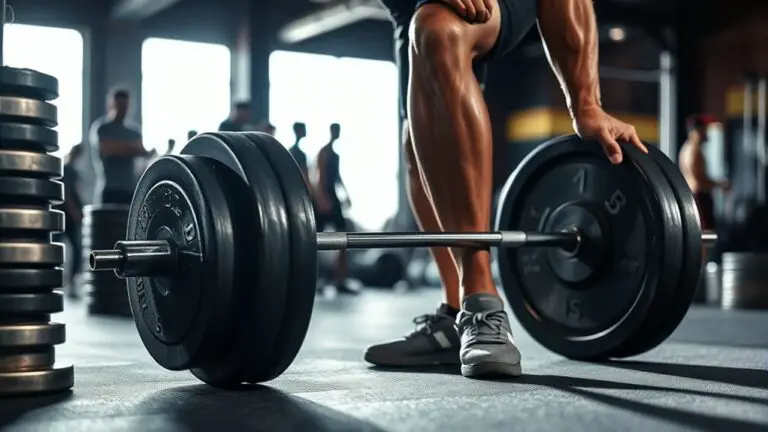The Best Gym Workouts for Teenagers Looking to Build Muscle
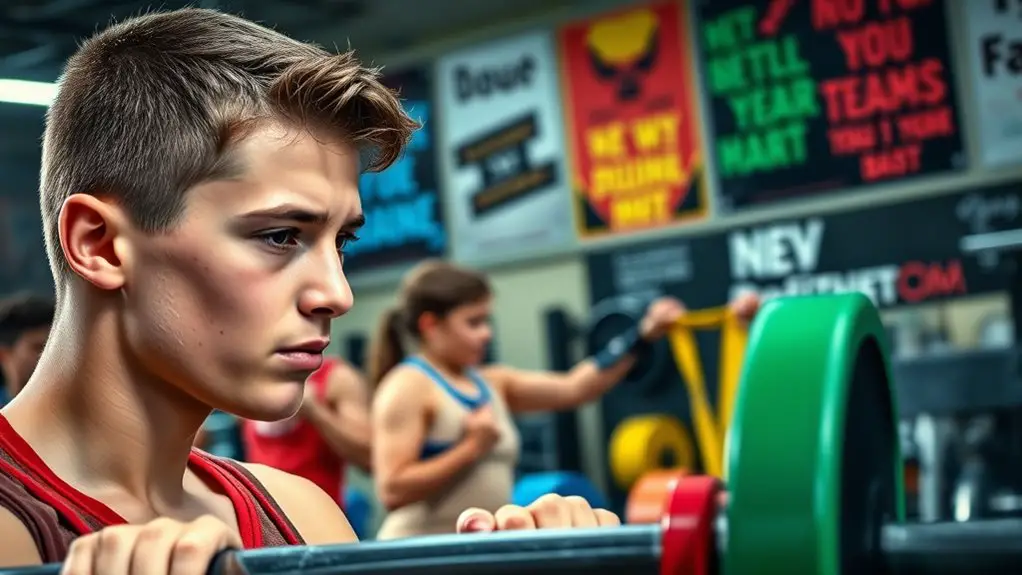
The best gym workouts for teenagers looking to build muscle focus on a balanced approach. Incorporate compound exercises like squats and deadlifts to engage multiple muscle groups efficiently. Don’t forget isolation exercises like bicep curls and tricep extensions for targeted strength. Proper nutrition and recovery are essential, so eat protein-rich meals and stay hydrated pre- and post-workout. Safety is key, so warm up adequately. You’re about to discover more tips to maximize your gains and enhance your fitness journey.
Understanding Muscle Growth and Development in Teenagers
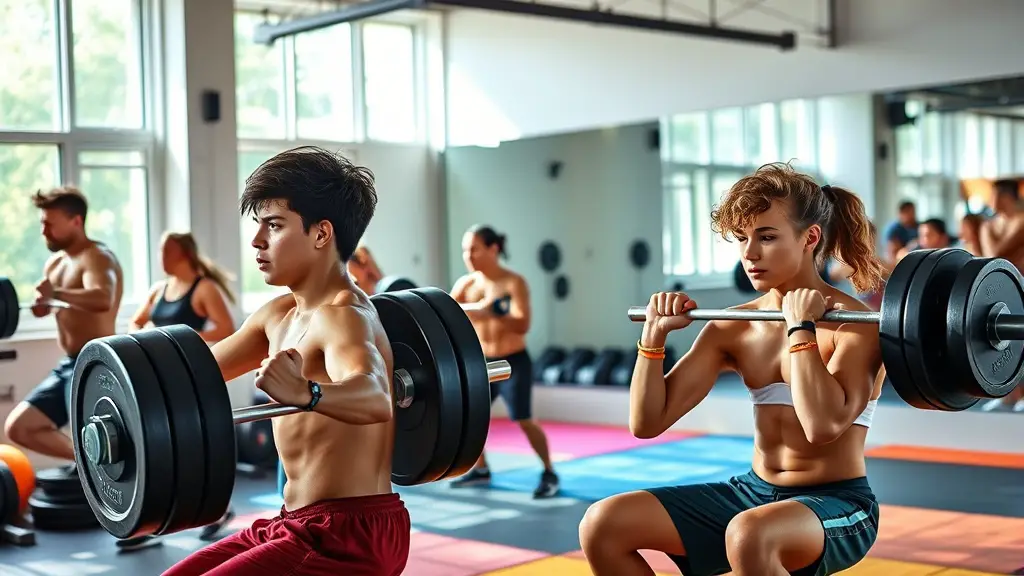
Understanding muscle growth and development during your teenage years is essential for building a strong fitness foundation. At this stage, your body is producing growth hormones at an accelerated rate, which plays a significant role in muscle development. These hormones help your muscles repair and grow after workouts, making muscle recovery an important part of your fitness regimen.
To optimize muscle growth, focus on incorporating resistance training into your routine, as it stimulates those growth hormones. However, don’t forget the importance of recovery. Allowing your muscles time to heal is just as essential as the workouts themselves. Adequate sleep, proper nutrition, and hydration will support your body’s natural recovery processes. By understanding these aspects, you’ll set yourself up for long-term success in your fitness journey, ensuring your body develops strength and resilience effectively. Additionally, monitoring your personal effort during workouts can help you gauge progress and adjust your routine as needed.
The Importance of a Balanced Workout Routine
To maximize your fitness results, a balanced workout routine is essential. It’s not just about lifting weights; incorporating different exercises guarantees you develop strength, flexibility, and endurance. This workout variety keeps things interesting and helps prevent boredom, which is vital for staying motivated.
Cross training benefits you by targeting different muscle groups and reducing the risk of injury. When you mix cardio, strength training, and flexibility exercises, you promote overall fitness and enhance your performance in each area. For instance, adding swimming or cycling can complement your weightlifting sessions, improving your cardiovascular health and aiding recovery. Additionally, incorporating an effective cardio workout like skipping rope can significantly boost your calorie burn and support weight loss efforts.
Top Compound Exercises for Building Muscle
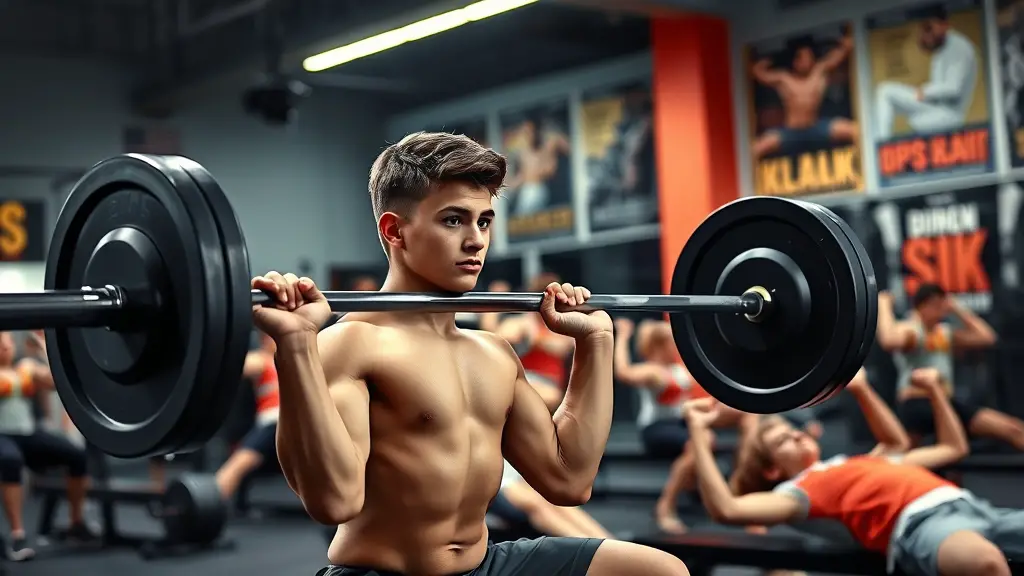
While you may be tempted to focus solely on isolation exercises, incorporating compound movements into your workout routine is essential for building muscle effectively. Compound exercises, like squats, deadlifts, and bench presses, engage multiple muscle groups at once, maximizing your time in the gym. For instance, when you perform a squat, you’re not just targeting your legs; your core and back are also working hard to stabilize your body.
These exercises promote greater muscle engagement, which can lead to increased strength and size. Aim to include a variety of compound lifts in your weekly routine, ensuring you work different muscle groups. Start with lighter weights to perfect your form, then gradually increase the load as you gain confidence and strength. Remember, the key to success is consistency and proper technique. By prioritizing compound exercises, you’ll set a solid foundation for your muscle-building journey.
Effective Isolation Exercises for Targeting Specific Muscle Groups
If you want to sculpt specific muscle groups and enhance your overall physique, isolation exercises are a valuable addition to your workout routine. These exercises focus on individual muscles, allowing you to build strength and definition.
Bicep curls are a perfect example; they target your biceps and help develop those coveted arm muscles. You can use dumbbells or a barbell, ensuring your form is correct to maximize effectiveness. Simply stand tall, keep your elbows close to your body, and curl the weights towards your shoulders.
Bicep curls effectively target your biceps, enhancing arm strength and definition with proper form and technique.
Tricep extensions are another great isolation exercise. They focus on your triceps, helping to balance out your arm strength. You can perform them seated or standing, using either a dumbbell or cable machine. Just extend your arms overhead, keeping your elbows stationary, and lower the weight behind your head before raising it back up.
Incorporating these exercises into your routine will lead to impressive muscle gains. Additionally, reverse curls can serve as an effective alternative to traditional bicep curls by targeting both the biceps and forearm muscles.
Sample Weekly Workout Plan for Teenagers
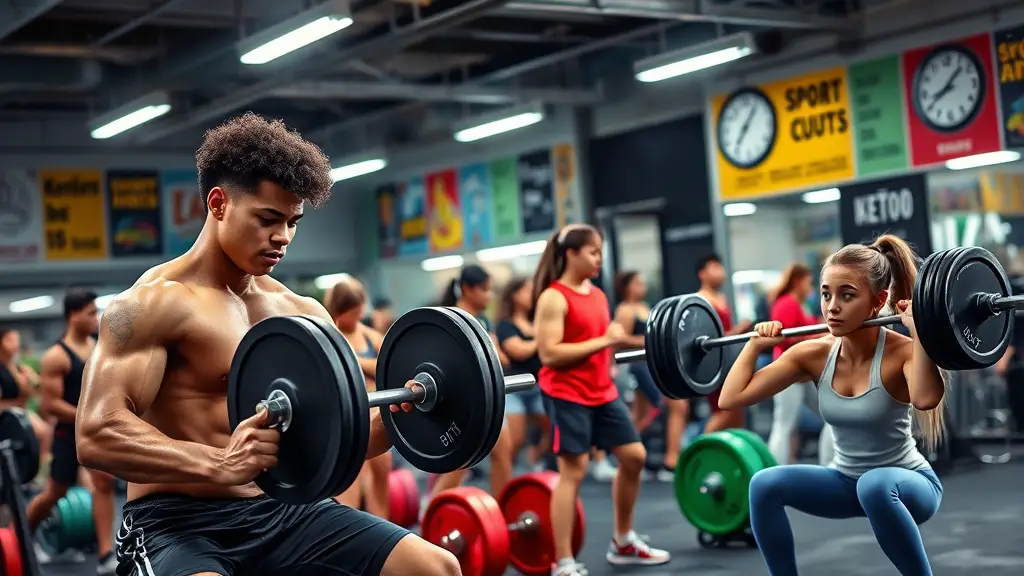
Creating a balanced weekly workout plan is essential for teenagers aiming to build strength, improve fitness, and develop healthy habits. A solid routine helps you establish a workout frequency that promotes muscle growth while preventing burnout. Here’s a sample plan to get you started:
- Monday: Upper body strength training—focus on exercises like bench presses and rows.
- Wednesday: Lower body strength training—include squats and deadlifts for powerful legs.
- Friday: Full-body workout—combine compound movements like burpees and kettlebell swings for overall strength.
Incorporating exercises like skipping rope can also enhance your cardiovascular endurance while you build muscle. Remember to warm up before each session and cool down afterward. Additionally, incorporating rest days is vital for recovery and muscle development. Listen to your body, adjust weights as needed, and stay consistent. With dedication, you’ll see progress and build the muscle you desire.
Nutrition Tips to Support Muscle Growth
To build muscle effectively, you need to focus on your nutrition just as much as your workouts. Incorporating protein-rich foods, staying hydrated, and timing your meals can greatly boost your muscle growth. Let’s explore how these elements work together to support your fitness goals.
Protein-Rich Foods
While you might be hitting the gym to build strength, don’t overlook the essential role nutrition plays in your muscle growth. Eating protein-rich foods is key to supporting your gains, so let’s focus on solid protein sources. Meal prep can make it easier to stay on track with your nutrition goals. Here are three great options to include:
- Chicken Breast – Packed with lean protein, it’s perfect for muscle recovery.
- Greek Yogurt – A tasty snack that’s high in protein and great for post-workout.
- Lentils – A fantastic plant-based protein source, ideal for vegetarian options.
Incorporating these foods into your diet will help fuel your workouts and boost your muscle-building efforts!
Hydration Importance
Although many teens focus on lifting weights and protein intake, hydration is just as essential for maximizing muscle growth and overall performance. Proper hydration strategies can greatly impact your workouts and recovery. A well-hydrated body helps in nutrient absorption, temperature regulation, and muscle function.
| Hydration Strategy | Hydration Benefits | Tips for Implementation |
|---|---|---|
| Drink water before workouts | Increases energy levels | Carry a water bottle with you |
| Sip water during workouts | Enhances endurance | Take small sips every 15-20 mins |
| Rehydrate after workouts | Aids recovery | Consume electrolytes post-exercise |
Balanced Meal Timing
When you time your meals correctly, you can greatly boost muscle growth and enhance your workout performance. Focusing on meal frequency and nutrient timing can make a significant difference in your results. Here are three tips to help you optimize your nutrition:
- Pre-Workout Fuel: Eat a balanced meal or snack 1-2 hours before hitting the gym. Include protein and carbohydrates for energy and muscle support.
- Post-Workout Recovery: Consume a protein-rich meal within 30-60 minutes after exercising. This helps repair muscles and kickstarts growth.
- Regular Meals: Aim for 4-6 smaller meals throughout the day. This keeps your energy levels steady and provides your body with nutrients it needs for continuous muscle development.
Safety Guidelines and Best Practices for Young Athletes
Before you hit the gym, make sure you’re warming up properly to prepare your muscles and prevent injuries. It’s also essential to have supervision, especially if you’re trying new exercises or using heavier weights. Staying safe while working out sets the foundation for a strong and healthy fitness journey. Additionally, engaging in regular exercise during youth can prevent obesity and chronic diseases, helping to ensure a healthier future.
Proper Warm-Up Techniques
A proper warm-up is essential for any teenager looking to maximize their gym workouts and prevent injuries. Incorporating effective warm-up routines can enhance performance and flexibility. Here are three key components to include in your warm-up:
- Dynamic Stretches: Focus on movements that mimic your workout, like leg swings and arm circles, to prepare your muscles for action.
- Light Cardio: Engage in 5-10 minutes of light cardio, such as jogging or jumping jacks, to increase your heart rate and blood flow to your muscles.
- Movement-Specific Drills: Perform exercises related to your main workout, like bodyweight squats or push-ups, ensuring your body is ready for the demands ahead.
These techniques will help you build muscle while keeping injuries at bay!
Importance of Supervision
While it might seem like a good idea to hit the gym solo, having supervision is vital for young athletes. Proper guidance can prevent injuries and guarantee you’re using equipment correctly. Supervisory roles, whether from a coach or a knowledgeable adult, help you understand your limits and push you safely. Parental involvement is important too; parents can educate themselves about fitness and exercises, allowing them to support you effectively. Additionally, working out under supervision encourages accountability and motivation. It’s not just about lifting weights; it’s about developing good habits that’ll last a lifetime. So, always aim for a workout buddy or a supervisor to maximize your gym experience while staying safe. Your body will thank you later!
Frequently Asked Questions
How Often Should Teenagers Change Their Workout Routine?
Changing your workout routine is like revitalizing a playlist; it keeps things exciting and prevents boredom. For teenagers, adjusting your routine every 4 to 6 weeks is ideal. This workout frequency allows your body to adapt and respond to new challenges, promoting progress and preventing plateaus. Incorporating different exercises, rep ranges, or workout styles can enhance your gains. Remember, routine adaptation is key to keeping your workouts engaging and effective!
Can Teenagers Safely Use Supplements for Muscle Growth?
When it comes to supplement safety for muscle growth, teenagers should be cautious. Many supplements aren’t well-studied for younger individuals and can have side effects. It’s best to focus on a balanced diet rich in proteins, vitamins, and minerals to support your training. If you’re considering a supplement, always consult a healthcare professional first to guarantee it’s safe for you. Remember, natural food sources are typically the best for growth and overall health.
What Are the Signs of Overtraining in Teenagers?
Imagine a garden that’s overwatered, struggling to bloom. When you’re training, you can also face signs of overtraining. Look for symptoms like persistent fatigue, irritability, and lack of motivation—these are your fatigue signs. If your performance plateaus or you’re constantly sore, it’s a signal your body needs a break. Just as plants need rest, so do you. Listen to your body; balance is key to thriving in your fitness journey.
How Important Is Rest and Recovery for Muscle Building?
Rest and recovery are essential for muscle building. Without proper rest techniques, your muscles can’t repair and grow effectively. It’s important to incorporate recovery strategies like adequate sleep, hydration, and active recovery days into your routine. These practices help prevent overtraining and reduce the risk of injury. Remember, your body needs time to adapt to workouts, so don’t underestimate the power of a good rest day in achieving your fitness goals.
Can Teenagers Build Muscle Without Using Weights?
Did you know that about 70% of teens who focus on bodyweight exercises see significant muscle gains? You don’t need weights to build muscle; bodyweight exercises like push-ups and squats can be incredibly effective. Plus, incorporating resistance bands adds variety and helps increase resistance, promoting growth. By consistently challenging your muscles with these methods, you can achieve impressive results while developing strength and endurance without ever stepping foot in a weight room.
